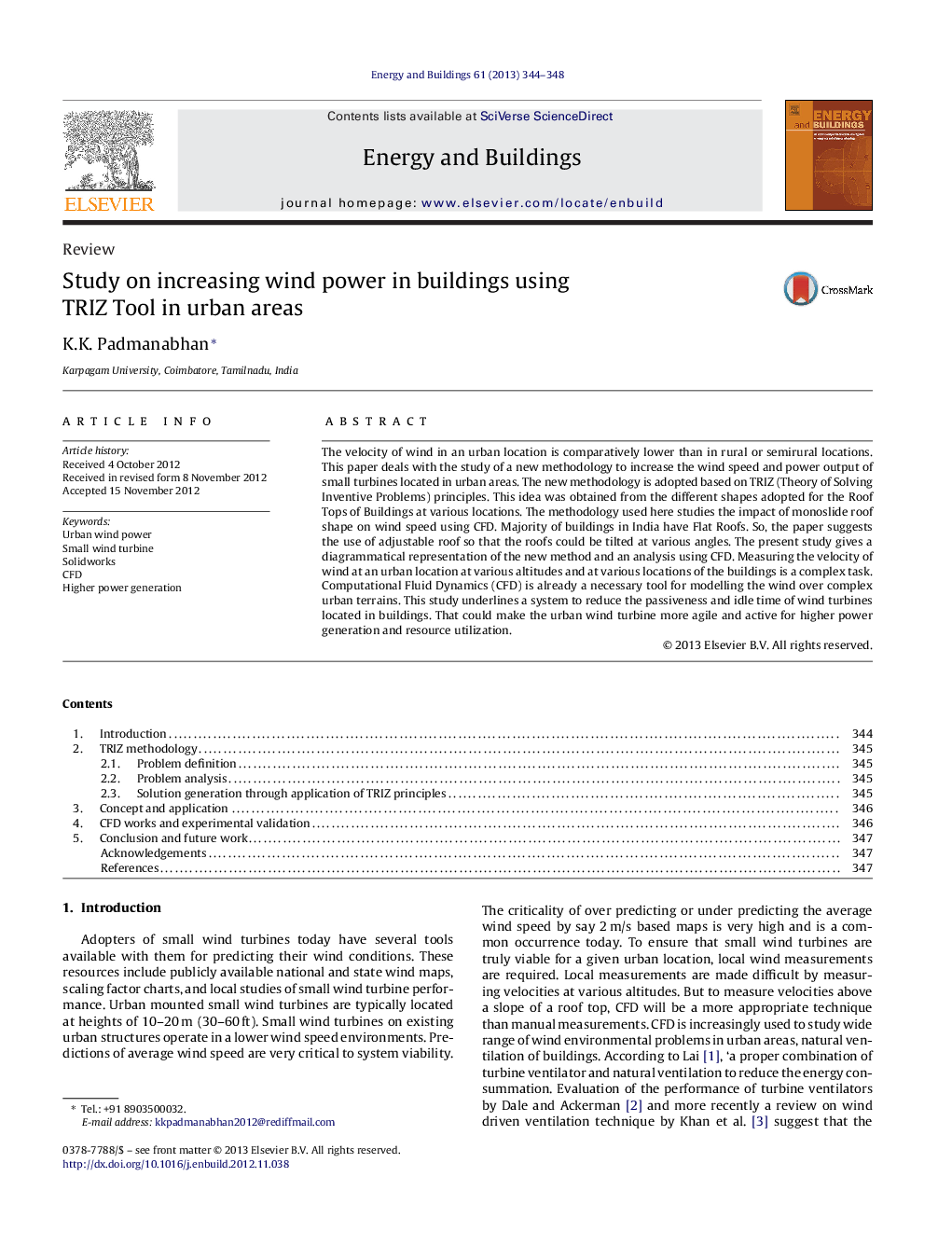| Article ID | Journal | Published Year | Pages | File Type |
|---|---|---|---|---|
| 263470 | Energy and Buildings | 2013 | 5 Pages |
The velocity of wind in an urban location is comparatively lower than in rural or semirural locations. This paper deals with the study of a new methodology to increase the wind speed and power output of small turbines located in urban areas. The new methodology is adopted based on TRIZ (Theory of Solving Inventive Problems) principles. This idea was obtained from the different shapes adopted for the Roof Tops of Buildings at various locations. The methodology used here studies the impact of monoslide roof shape on wind speed using CFD. Majority of buildings in India have Flat Roofs. So, the paper suggests the use of adjustable roof so that the roofs could be tilted at various angles. The present study gives a diagrammatical representation of the new method and an analysis using CFD. Measuring the velocity of wind at an urban location at various altitudes and at various locations of the buildings is a complex task. Computational Fluid Dynamics (CFD) is already a necessary tool for modelling the wind over complex urban terrains. This study underlines a system to reduce the passiveness and idle time of wind turbines located in buildings. That could make the urban wind turbine more agile and active for higher power generation and resource utilization.
► General simulation evaluation framework to increase the wind energy output. ► Effect of building shape and slopes in the productivity of small wind turbines. ► TRIZ Tool gives idea to bring about efficiency in small wind turbines. ► Solid works flow simulation software for wind turbine analysis for the first time. ► Results show increase in power output from the urban household wind turbine.
